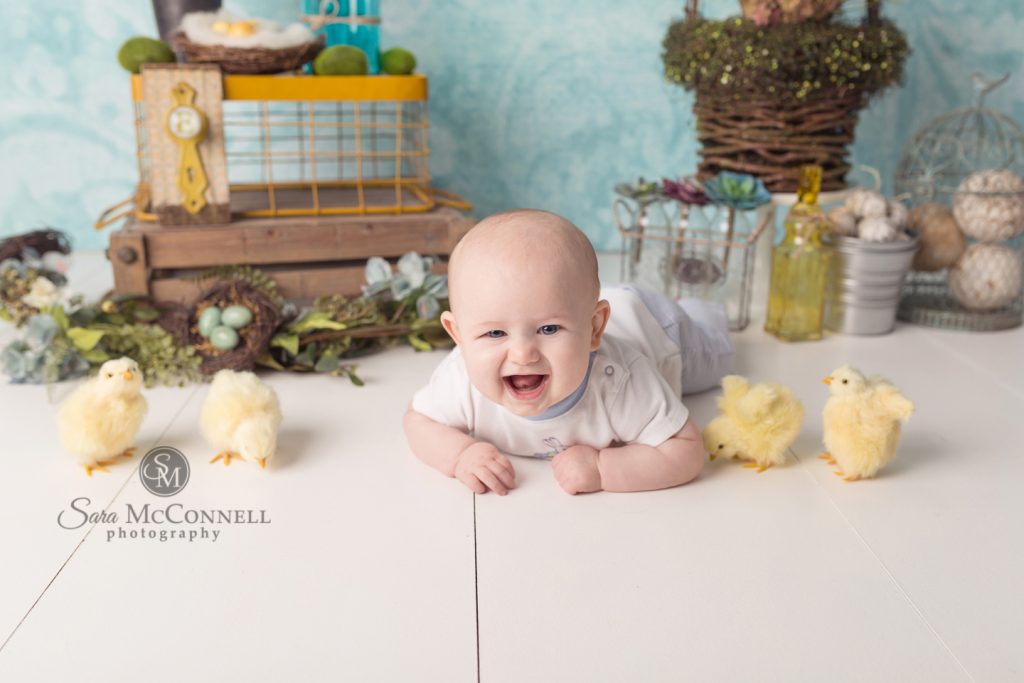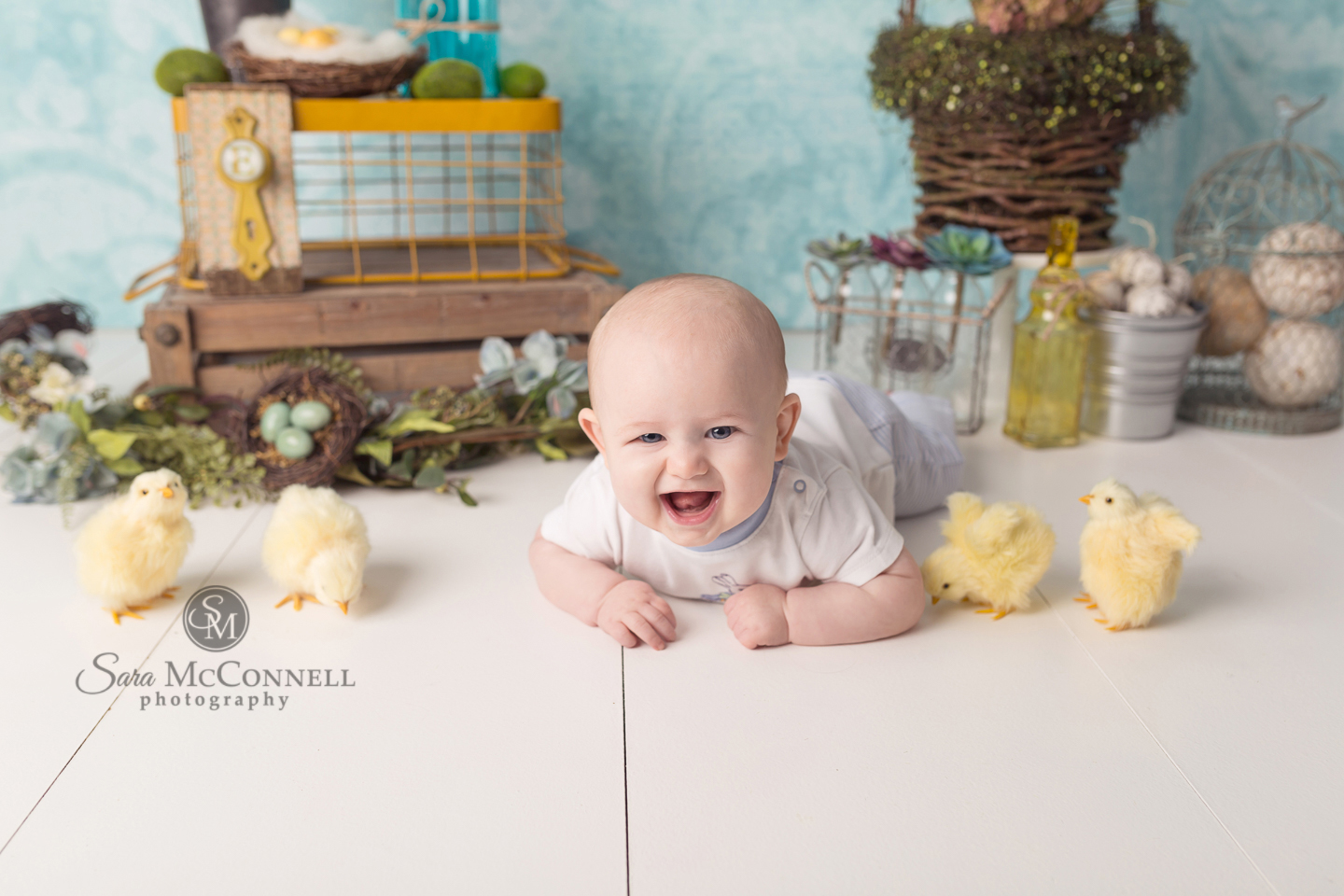
I always enjoy Easter mini sessions: the snow has begun to melt, the temperatures are rising, and there are so many adorable babies and children who come to the studio wearing their colourful Spring outfits. Every year I receive several requests for baby birds and bunnies for my Easter sessions: when I was first asked years ago to include live animals in my sessions I started doing research into what having a session with bunnies or birds would entail.
Before I use any prop, pose or set-up in my studio I always thoroughly research any risks or potential complications or safety issues. I often see sessions with animals advertised at this time of year so I was very surprised at the information I came across.
- Level of care: baby chicks require a very specific set-up and heat lamps are required for their survival. The requirements for bedding, cage construction, and temperature as well as health issues (as the chicks in photo sessions are generally less than a week old) are extensive.
- Lifelong care: Animals aren’t just for Easter (or Christmas or Halloween or any other holiday). I was left wondering what happens to the bunnies and chicks who take part in sessions; where do they go when Easter sessions are done? How are photographer’s assured they will be well cared for?
- Stress: studio lights, numerous children and toddlers, noise, temperature changes; these stressors can have health and safety implications for both baby birds and bunnies.
- Injuries: animals can be seriously injured or killed if they are dropped or crushed. Children are also at risk of being bitten or scratched.

While these are all serious issues to consider the most alarming to me was the fact that baby poultry (chicks and ducks) are carriers of Salmonella. While the baby birds look and are otherwise perfectly healthy they carry the germs on their feathers, beak, and their feet. The Centre for Disease control has written a post about the risks of baby birds transferring salmonella to humans and their list of warnings is as follows:
- Don’t let children younger than 5 years of age, older adults, or people with weak immune systems handle or touch chicks, ducklings, or other live poultry.
- Don’t snuggle or kiss the birds, touch your mouth, or eat or drink around live baby poultry.
- Don’t let live baby poultry inside the house, in bathrooms, or especially in areas where food or drink is prepared, served, or stored, such as kitchens or outdoor patios.
- Don’t eat or drink in the area where the birds live or roam.
- Don’t give live baby poultry as gifts to young children
While proper hygiene (hand washing and disinfecting all surfaces and materials that the baby birds come into contact with) can reduce the likelihood of someone being infected with salmonella, the risks in a photography studio are especially high as the birds are roaming free on the set and props and they are pooping on the floor where babies and children are sitting and crawling.

I would encourage you to visit the link included in this article and think carefully before you book a session that involves either baby chicks or bunnies. Along with health and safety concerns it’s important for you to ask the photographer an extensive list of questions about their care of the animals, where the animals are cared for after the session, how they reduce stressors on the animals during the session, and how they prevent injuries to children and animals as well as prevent the spread of illness and disease. In my twelve years of motherhood I had never heard about the health risks involved in handling baby chicks and ducks and I feel it’s important to share this information with other parents so they can make informed decisions about their children’s participation in sessions that involve baby animals.
Thanks to realistic props and the magic of Photoshop it’s possible for fluffy and cuddly little creatures to safely “appear” in your photography session!
Book your 2018 Easter Session



Pingback : Boho Spring Studio Sessions | Ottawa - Sara McConnell Photography Blog